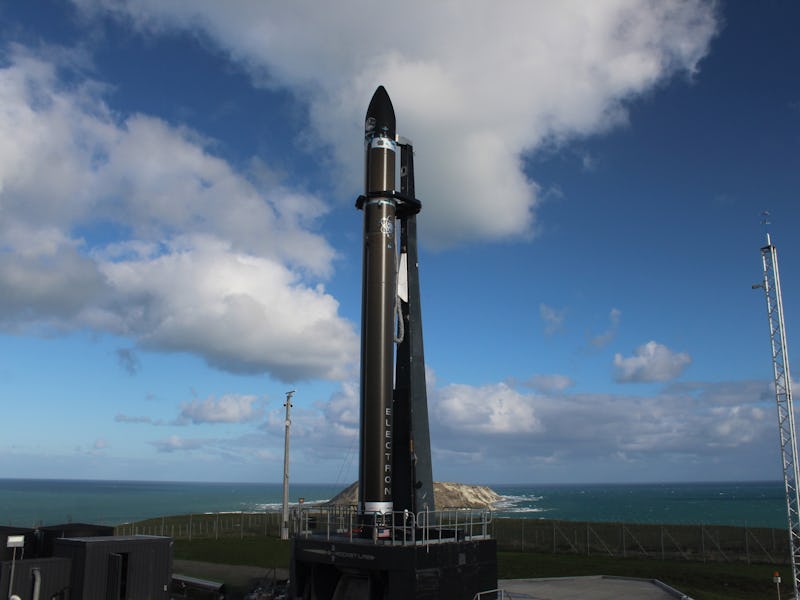Rocket Lab: how to watch SpaceX competitor’s ‘Don’t Stop Me Now’ mission
The company's next launch will support a NASA CubeSat project featuring student designs.

Rocket Lab, the space-faring firm that's focused on small satellites, is about to tackle a series of tiny satellites.
The firm's "Don't Stop Me Now" mission, currently scheduled for June 13, will use a single Electron rocket to launch a series of satellites as part of a "rideshare" arrangement – think UberPool but for satellites. The rocket will send up satellites from NASA, the National Reconnaissance Office, and the University of New South Wales Canberra Space team. The mission will take off from Rocket Lab Launch Complex 1 in New Zealand.
It's the second launch of 2020 from one of the most exciting companies in the spaceflight business. Rocket Lab's first launch of the year was "Birds of a Feather" on January 31, another mission for the National Reconnaissance Office. It's the 12th mission for Electron overall, with its first successful flight in January 2018.
Its efforts have earned praise from the likes of SpaceX CEO Elon Musk, both firms of which are working as part of an emerging commercially-driven space race. In March, Rocket Lab successfully retrieved a booster using a helicopter, a move that could help the firm reduce the costs associated with flying rockets. The firm's efforts were singled out by Musk as "cool," adding that "I have great respect for anyone who gets a rocket to orbit!"
The feeling appears to be mutual. Peter Beck, Rocket Lab's CEO, told Inverse ahead of SpaceX's first crewed mission launch that the launch was "super exciting," "wonderful," and that "NASA did exactly the right thing."
"Don't Stop Me Now" is named in memory of board member Scott Smith, who died in February 2020. The song was Smith's favorite from the band Queen.
The Electron rocket.
Rocket Lab mission: what the rocket will send into space
The rocket will send up payloads from organizations.
The first is from NASA. It's a CubeSat, a technical term for a satellite measuring 10 centimeters on each side per unit. This one has been made by students and professors at Boston University, and it's dubbed the ANDESITE. That's an abbreviation for Ad-Hoc Network Demonstration for Extended Satellite-Based Inquiry and Other Team Endeavors. The team will use it as part of a wireless network of mini-satellites to measure electrical currents in Earth's magnetic field. This can be used to predict solar storms, measure auroras, and help people understand how radio communications may be affected.
The second group is the NRO, which is launching three payloads as part of the Rapid Acquisition of a Small Rocket contact vehicle. This will help the agency send more small satellites into space.
The third is the University of New South Wales Canberra Space team. The team is sending up the M2 Pathfinder, which will test communications in low Earth orbit. It's been built in partnership with the Australian government.
The Electron rocket.
Rocket Lab mission: launch time, mission plan, and how to watch
The mission was originally scheduled to lift off on June 11 at 4:45 p.m. New Zealand time. This attempt was scrubbed due to high winds.
The mission is currently set to launch on June 13 at these times:
- 4:43 p.m. New Zealand time
- 6:43 a.m. Central European time
- 5:43 a.m. British Summertime
- 12:43 a.m. Eastern time
- 9:43 p.m. Pacific time (Friday)
Following liftoff, the payload will deploy around one hour later. Here's how it will work:
- At 2 minutes and 36 seconds after lift-off, the engine cuts off.
- At 2 minutes and 39 seconds, the first stage separates.
- At 2 minutes and 42 seconds, the Rutherford engine on the second stage is ignited.
- At 3 minutes and 12 seconds, the fairing separates.
- At 6 minutes and 31 seconds, a battery hot-swap is performed.
- At 8 minutes and 52 seconds, the rocket reaches orbit.
- At 9 minutes and 2 seconds, the second stage separates from the kick stage.
- At 51 minutes and 34 seconds, the Curie engine on the kick stage ignites.
- At 53 minutes and 10 seconds, the Curie engine cuts off.
- Around an hour after launch, the payload deploys.
The firm has produced a visualization to demonstrate this process:
The stages of the mission.
Watching along with the launch is simple. It will be available around 20 minutes prior to the launch at Rocket Lab's livestream page. Alternatively, you can check the firm's YouTube page to see when it goes live.
On the other hand, if you're nearby, you can visit the Blucks Pit viewing site located around 20 miles from the launch facility.